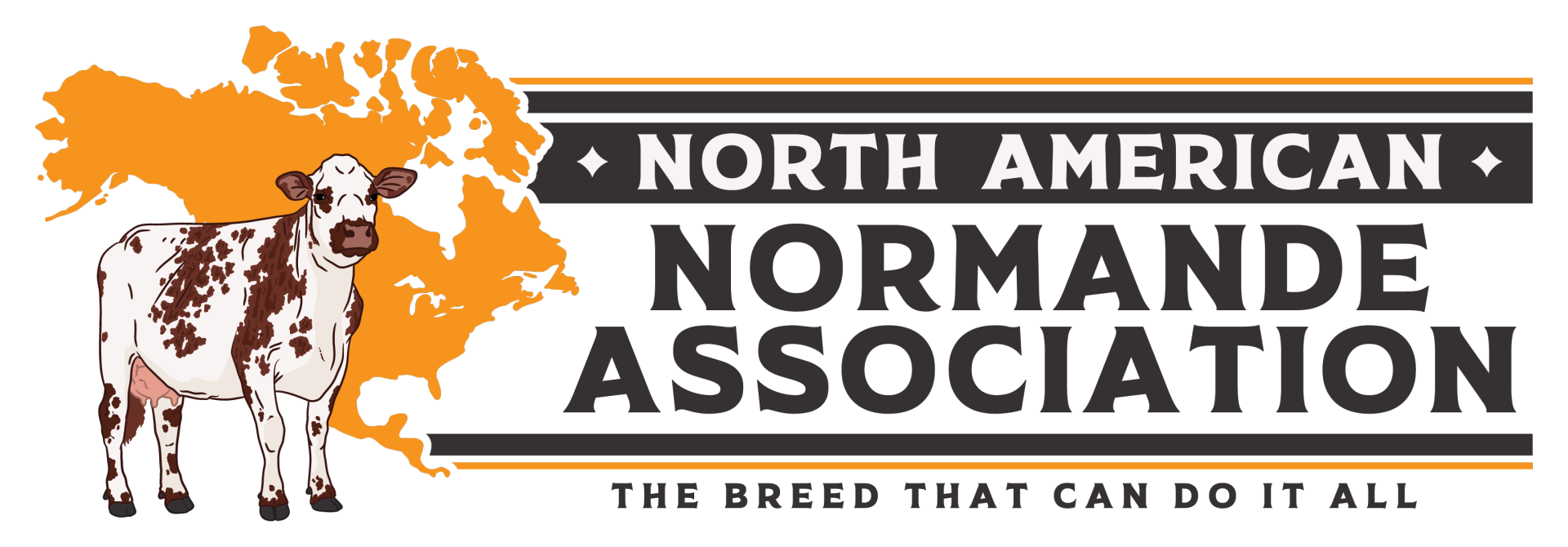The Origins of Normande Cattle in France
The Normande breed has its beginnings in the Normandy region of France. Sometime in the 18th Century farmers in Normandy began cross breeding three breeds of cattle (Cotentine, Augeronne, and Cauchoise) and the result was one homogeneous breed-the Normande. The Cotentine (red brindled hair coat) was described as a tall cow, heavier than normal, and above all, an excellent milk cow. The Augeronne breed (mottled white hair coat) was moderate in size and was known for its quality as beef cattle, smaller frame and easier to fatten than the Cotentine breed. The third breed in this cross was the Cauchoise (red pied coat with a dash of Flemish blood). The distinguishing feature of this breed was its white or almost entirely white head (at least 2/3’s).
In 1836, and for about forty years after that, some Normande breeders sparingly introduced Shorthorn blood into the breed with the goal of producing animals that developed earlier, were less coarse, and fattened more readily. However it appears the Cotentine breed was the major contributor to the development of the Normande breed.
In 1883, breeders of these unique cattle established a Pedigree Book and created the Normande Herd Book to record the pedigrees and register the parentage of Normande cattle.
The early breed founders made their genetic selections based on milk production and meat production. As the farmers of Normandy France developed and improved this new breed of cattle they ended up developing an outstanding dual purpose breed. 125 years of genetic selection for both milk production and meat production has resulted in the modern Normande.
